The medium is the message. The medium is the massage. Even if you have never heard of Marshal Mcluhan before, you are likely familiar with this phrase. Even if you are not familiar with it, you have undoubtedly lived it out: proven it time and again with the way you use media, the way you communicate, the way you think, the way you are surrounded by embedded attitudes that are so much a part of the fabric of society that you are not even aware you might be carrying them around. Mcluhan’s ideas are so entrenched around us that we can no longer see them.
How does a fish know it is in water?

A salmon swims upstream.
Ironically, I thought this phrase was a good metaphor and only when I googled it did I realize Marshal Mcluhan originally said it. Case and point.
Mcluhan is a big deal. It is impossible to talk about new media without talking about his ideas. I mean, the guy predicted the world wide web thirty years before it happened for goodness sake.
But you also can’t read Mcluhan without being confronted and jarred by his racist notions of Indigeniety. There are his diminishing attitudes towards oral cultures:
“Until writing was invented, man lived in acoustic space: boundless, directionless, horizonless, in the dark of the mind, in the world of emotion, by primordial intuition, by terror”. – Marshal Mcluhan
The Bathwater
This attitude prevails today and is consistently pushing against Indigenous resurgence. One example is the hesitancy of Canadian courts to recognize oral history as evidence, something that happened only in 1997 with Delgamuukw v British Columbia and remains misunderstood to this day. Another is the ‘remarkable’ recent discovery of Sir John Franklin’s failed expeditions on The Erabus and The Terror, despite the Inuit people having known the ships location all along due to their tradition of oral history.
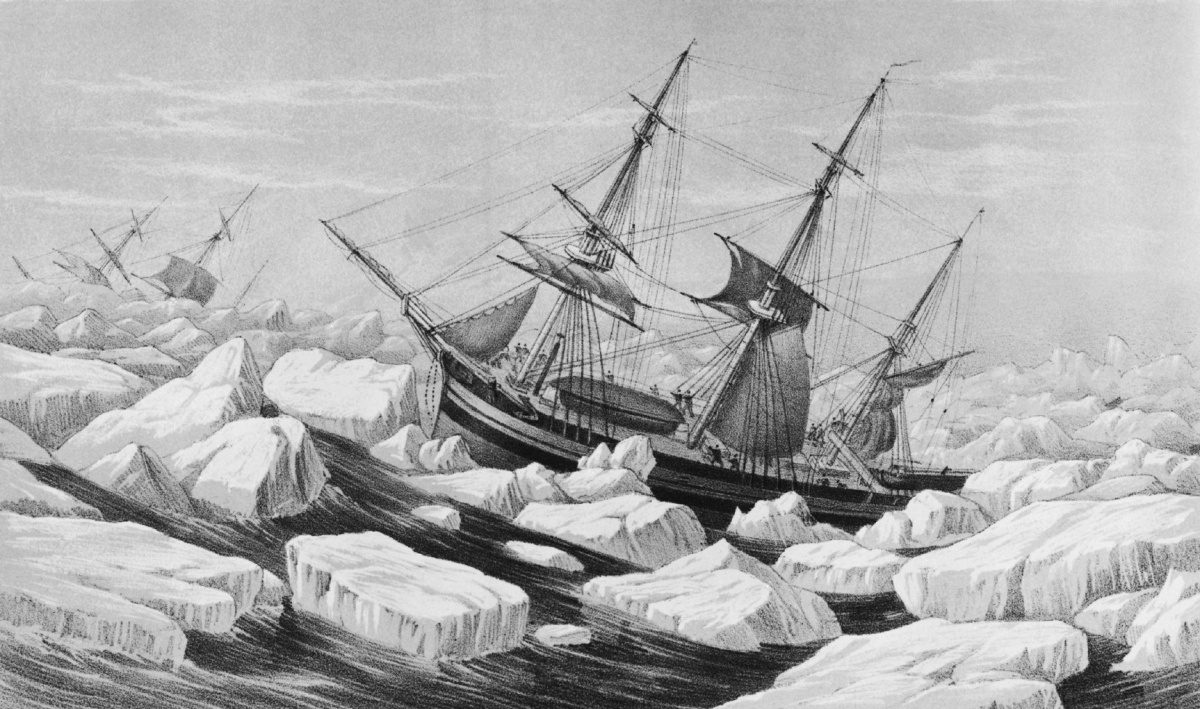
HMS Erebus and HMS Terror (courtesy of The Star).
Yet Mcluhan then goes on to elevate our “emerging” auditory culture in a manner that dangerously romanticizes Indigenous cultures. In Coded Territories: Tracing Indigenous Pathways in New Media Art, Steven Loft asserts that Mcluhan is invoking notions of the ‘noble savage’, which dehumanizes very real, here-and-now cultures by mythologizing them and creating an abyss between the ‘back then’ and the present moment that they occupy. This is dangerous because it leads to what Thomas King calls ‘Dead Indian’ thinking. Think Disney’s Pocahontas and this list of white actors playing Indigenous characters in films.
Against this backdrop, Mcluhan’s comment that “Holywood is often a fomenter of anti-colonialist revolutions”, seems absurd. It is moments like these, amongst others, that make us say….
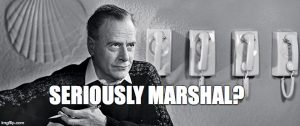
Feel free to share your favourite “srsly Marshal” moments in the comments below.
This aspect of Mcluhan – conceited colonialism, white male privilege, academic egotism, absolute after absolute – is what we might call the bathwater. But there is still a baby to be found in Mcluhan’s work.
The Baby: Time & Space
While Loft notes Mcluhan’s problematic language and views, he actually focuses most of his chapter about “Mediacosmology” on what Mcluhan got right.
“I am still amazed at his insight into an area into which other Western theorists fear to tread. And sometimes he just nails it”. – Steven Loft
So what did Mcluhan get right in his infamous phrase ‘the medium is the message?’
The medium is the message means that how we communicate is often more important than what we communicate. But it goes beyond that as well. It means that our modes of communication, more so than the content we communicate, shapes our society, our worldview and our perception of self and others. One of the ways that it does this is blurring our conceptions of time and space. Medium is message and medium is Mass Age.
Mcluhan observes the erasure of time and space as one of the major ‘effects’ of new electric circuitry. I tweeted this observation of his on a forum that marks the exact date that I posted it…

Where it will exist forever on the internet where the most prominent button is usually the ‘home’ button.
Nonetheless, Mcluhan states that electric circuitry “has overthrown the regime of ‘time and ‘space’… Its message is Total Change, ending psychic, social, economic, and political parochialism… Nothing can be further from the spirit of the new technology than ‘a place for everything and everything in its place’. You can’t go home again”.
This certainly was revolutionary at the time, and still is today. But only to certain audiences: Indigenous people have known this since time immemorial. While Mcluhan says we are ‘retribalizing’ through our modes of communication, Loft says “there is no ‘re’ for us”.
“Cyberspace connects the past to the present and the spiritual to the material in ways that would make our elders laugh. They’ve always known this. It’s in our stories and it’s in our ways of communicating and remembering”. – Steven Loft
In other words, there is nothing new under the sun. Mcluhan isn’t discovering something revolutionary that no soul on earth had ever thought of. He is merely stumbling on a way of life that is older than he or I can imagine. Media can do what Mcluhan is suggesting, blur time and space, but so can traditional knowledge.
“For Aboriginal people, circularity of thinking and concepts of time and space and continuity are intrinsic to the way we see the world and behave toward it”. – Steven Loft
It’s not necessarily that Time and Space are overthrown or don’t exist, it’s merely that our western conceptions of them do not or cannot comprehend how these work beyond our alphabetized worldview.
By alphabetized worldview, I mean the linear, ultra-rational thinking that Mcluhan believes comes from our mode of writing: the alphabet. He says it has fragmented our thinking.
“The fragmenting of activities, our habit of thinking in bits and parts – ‘specialism’ – reflected the step-by-step linear departmentalizing process inherent in the technology of the alphabet”. – Marshall Mcluhan
The medium is the message indeed.

Edward Bernard’s “Orbis eruditi”, comparing all known alphabets as of 1689 (courtesy of Wikipedia).
The s y m b o l s we use in the modern alphabet evolved from the Pheonecian alphabet, which is originally derived from Egyptian Hieroglyphs. Fast-forward to 2015 and Oxford Dictionary’s Word of the Year was an emoji. The ‘tears of joy’ emoji to be precise.
 —————>
—————> 
The emoji is a picture that has come to replace alphabetic symbols that once descended from ancient pictographs. We appear to have come full circle. This may be an example of how today’s methods of communication have blurred the relationship between different times and different spaces. Emojis evidently have their problems with representation but I keep wondering, “what will be the effect on our worldview of communicating through pictures once more if the medium really is the message?”
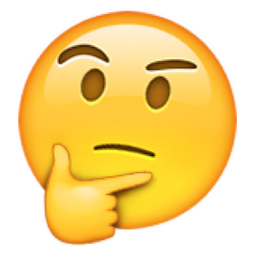
Loft’s example of a medium that transcends time and space is somewhat more significant and certainly more aesthetically pleasing. He refers to the Wampum as part of “a visual language, conceptual, and mystical, transcending the temporality of the written word: a language for the ages, to be constantly recounted and re-inscribed for the generations past, present, and into the future”.
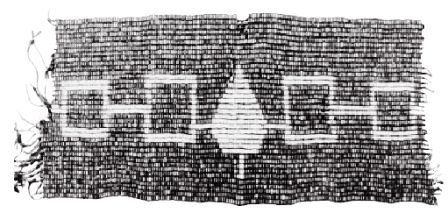
Iroquois Wampum belt.
It interrupts fragmentation. It blurs time and space. It does what cyberspace did before cyberspace was conceivable. This is why Loft says that cyberspace is Indigenous space. Because it has always existed within their culture.
We should be cautious though, when thinking about Mcluhan’s assertions of time and space and medium as message, that they do not impede efforts of de-colonization. Linear, western notions of time and space have been used as means of colonization: prescriptive maps, arbitrary borders, relocation of communities, residential schools far away from communities, the false binary between ‘traditional’ and ‘modern’, settlers who say “it happened so long ago” or “I wasn’t directly involved. I wasn’t there”.
A B C D E F G H I J K L M N O P Q R S T U V W X Y Z !@#$(*&^ 1 2 3 4 5 6 7 8 9 0
Western culture may well be evolving to a more flexible conception of time and space through the mediums we use. But we cannot let that erase or overshadow the way that the concepts ‘time’ and ‘space’ have previously been perceived and the way that they were and are used to perpetrate violence against Indigenous peoples.
At the same time, new notions of time and space can challenge parochial and neo-colonial views of ‘primitive vs. modern’. As our mediums of communication cause western concepts of time to become further stretched and challenged, one can only hope that this will also challenge the binary between modern and ‘primitive’, traditional and contemporary, urban and rural – the binaries that play into the problem of the ‘noble savage’ and ‘Dead Indian’ discussed earlier.
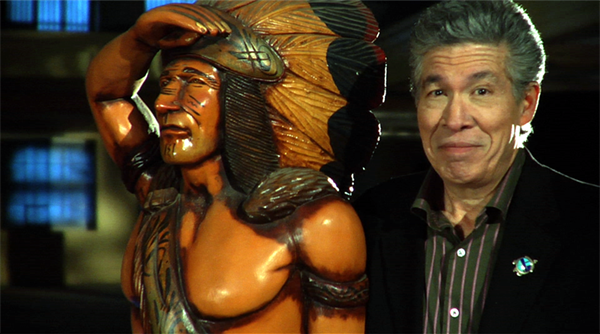
Thomas King in “I’m not the Indian you had in mind” (courtesy of the National Screen Institute).
“Native concepts of history find no gulf between different segments of time. Each time is different, but it does not mean that there is an impenetrable wall because of that difference”. – Deborah Doxtator
One can only hope that the worldview articulated by Deborah Doxtator, and to some extent by Mcluhan, can help challenge the settler colonial tendency of using time and space to disassociate themselves from ‘historic’ violence against Indigenous bodies and systems of knowledge.
Maybe Mcluhan’s articulation of an idea that has been alive and woven into Indigenous societies for millennial can be helpful for this. Maybe it can be helpful in helping setters take off the blinders of linear thinking and the western alphabetized worldview. And maybe this will ultimately help them understand Indigenous conceptions of time and space. Hopefully it will then contribute to decolonizing the psyche and worldview of settlers across North America.
So don’t throw out the baby with the bathwater just yet.
While the question of “what do we do with Mcluhan” still rings loud in our ears and I do not claim to have the answers, somewhere deep in the depths of the internet someone has at least made a good start:

Resources:
Ashifa Kassam, The Guardian: Inuit argue for say as Canada and Britain decide fate of HMS Terror wreck https://www.theguardian.com/world/2016/sep/16/inuit-canada-britain-shipwreck-hms-terror-nunavut
Katie Hyslop, The Tyee: UBC Professor says Aboriginal Oral History Misunderstood http://thetyee.ca/Blogs/TheHook/Aboriginal-Affairs/2012/02/06/UBC-profs-say-Aboriginal-oral-history-misunderstood/
Lauren Duca, The Huffington Post: A Brief History of White Actors Playing Native Americans http://www.huffingtonpost.com/2014/03/13/white-actors-native-americans_n_4957555.html
Marshal McLuhan, The Medium is the Massage
Steven Loft, “Mediacosmology” in Coded Territories: Tracing Indigenous Pathways in New Media Art
Thomas King, Dead Indians: too heavy to lift http://hazlitt.net/feature/dead-indians-too-heavy-lift

I don’t know how much blogging you’ve done in the past, Clara, but you’re very tapped into the tone and feel of writing for the web. I love the short, punchy sentences, as well as the quotes, and images, you use to grab your readers attention and keep them moving through what can be some really challenging content. Definitely a model here for other folks. Great work!
(also, did you make that gif at the end? It’s great)
Thank you! Just the bit that I did for Coast Funds this summer, which I really enjoyed.
And no, I didn’t make this one unfortunately but turns out there’s a whole niche for Mcluhan gifs out there.